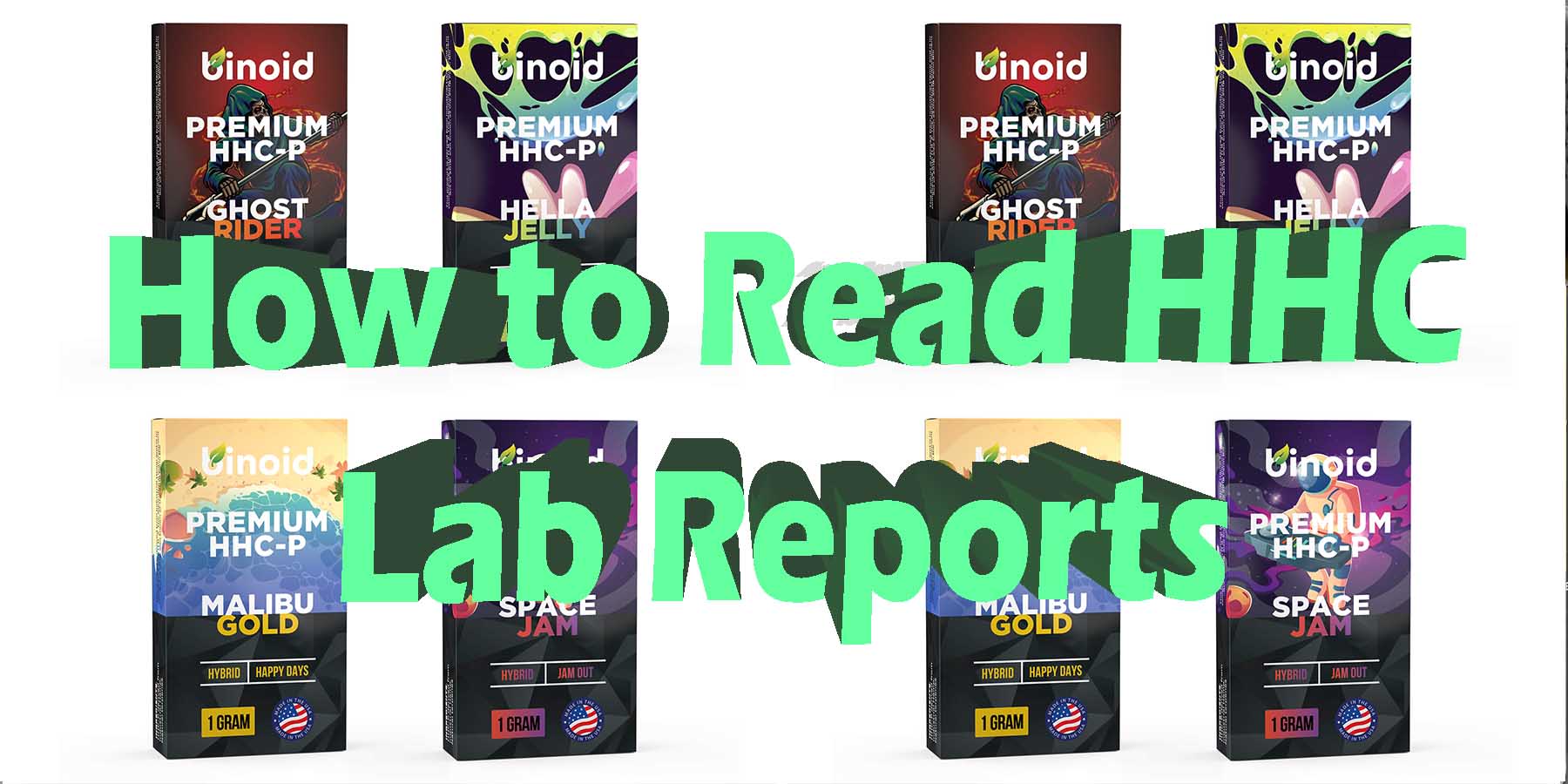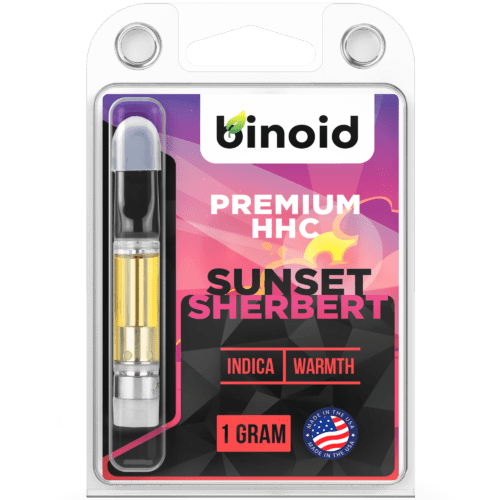
How To Read HHC Lab Reports
Hexahydrocannabinol (HHC) is a pretty new addition to our hemp awareness, even though it’s a naturally occurring compound found in the seeds and pollen of the hemp plant. HHC seems to behave almost identically to delta-9-tetrahydrocannabinol (delta-9 THC) without getting metabolized with the THC-COOH enzyme that’s known for triggering a positive drug test result. Plus, its psychoactive properties have quickly made HHC a fan favorite, while it remains federally legal due to its lack of delta 9.
As hexahydrocannabinol has been making its way onto the hemp market, you can mainly find it in the form of vapes, which have proven to be quite popular. But, as you probably already know, not all HHC is equally high in quality. And, even worse, you can always end up running into a fake without knowing it, if you aren’t careful.
Good news is that by simply knowing how to read an HHC lab report on a company’s website, you can determine whether or not a particular HHC product is worth spending the money on.
TO BUY HHC PRODUCTS CLICK HERE
-
Product on sale
 THC-B + HHC Gummies – Mixed (RELEASE SALE)$26.99
THC-B + HHC Gummies – Mixed (RELEASE SALE)$26.99$59.99 -
Product on sale
 HHC Tincture – 1000mg$29.99
HHC Tincture – 1000mg$29.99$79.99 -
Product on sale
 HHC Vape Cartridge – Sunset Sherbert$29.99
HHC Vape Cartridge – Sunset Sherbert$29.99$69.99
Why Should You Only Buy Lab-Tested HHC?
Like we said, not all hexahydrocannabinol is created equally, and that’s where lab reports come in. Third-party lab reports offer verifiable and objective information from a party that has no interest in profiting off of a product. It gives critical information to the consumer about purity levels, authenticity and the breakdown of cannabinoids present in the product, which is important since each cannabinoid can alter the experience that the user has by introducing different effects into the mix.
A lab report also tells you whether or not a hemp product is compliant with federal law. If it contains more than 0.3% delta 9 THC, then it’s federally illegal. Testing a hemp product for its delta-9 content is required and must be carried out by all hemp manufacturers.
Where to Find a Third-Party Lab Report
Third-party lab reports are supposed to be easy to find for the sake of the customer. All manufacturers of hemp products should make them accessible on their website, so that customers don’t need to ask for them. If a company is unwilling to share lab reports with their customers, they may very well be trying to hide something, so they should be avoided then.
A lab report should be made for each HHC product. One place where they may be is within each product page alongside the product description. Alternatively, some companies have a separate page that lists a link to each individual report so that they can all be inspected together.
-
Product on sale
 HHC Vape Cartridge – Lucid Blue$29.99
HHC Vape Cartridge – Lucid Blue$29.99$69.99
How Do You Know if a Lab Report is Legitimate When Looking at It?
Once you find an HHC lab report, you’ll want to make sure that it’s legitimate. Believe it or not, some companies do try to fake their lab reports, and this is extremely dishonest and may reflect fake or harmful products that they’re trying to sell.
- At the top of a lab report should be the name of the lab where it was tested, along with some sort of reference number.
- Look up this laboratory to make sure that it really exists.
- Also, make sure the company is registered to analyze hemp through its state.
- You can also use the reference number to be extra sure that the report is authentic.
What to Look for When Checking an HHC Lab Report
All hemp-based lab reports usually comes in two individual parts, both from the same testing process.
Part 1: Gives you a very extensive, detailed breakdown of the analysis that can be several pages long, breaking down each testing process and give you lots of information about safety and purity levels. How? By offering individual categories for each type of material it was tested for, including solvents, toxins, heavy metals, contaminants, pesticides, microbes and more. This lets you know what you’re going to be putting into your body, so it’s good to have this information available. Obviously, a product containing harmful compounds should be avoided.
Part 2: Will provide a breakdown of all of the chemical compounds present, including a cannabinoid breakdown that lists the percentage and milligram of each cannabinoid in the sample of hemp extract.
Now, here is where things get interesting.
-
Product on sale
 HHC Vape Cartridge – Gorilla Glue$29.99
HHC Vape Cartridge – Gorilla Glue$29.99$69.99
- You’ll find a list of cannabinoids that are being tested for, according to the percentage and milligram, including CBD and delta 9 THC, as well as delta 8 THC in most cases.
- There might be some delta 8 in an HHC product if the manufacturer decided to incorporate it into a formula, which isn’t all that uncommon.
- Terpenes are unlikely to be present, as these are usually added as a secondary component to HHC products that come in strains.
- What makes hexahydrocannabinol unique is that there is not yet a specific testing criteria for identifying HHC using chromatographic lab analysis methods. Therefore, a lab report may tell you how much HHC is in an extract based on the analysis of other cannabinoids. For instance, if an HHC sample contains 1.2% delta 8, the lab report may say that the extract is 97.8% HHC based on a process of deduction, despite not being able to actually identify the HHC compound.
Types of HHC Products and Their Cannabinoids
Because each type of HHC hemp product is derived and produced in its own way, the cannabinoid profile between different products can differ somewhat. If you’re very conscious of which cannabinoids you consume, you will want to keep this in mind when viewing a lab report.
- Vapes: HHC vapes usually have 1 to 3 cannabinoids max, with hexahydrocannabinol acting as the primary active compound.
- Edibles: HHC Edibles often have a slightly larger array of cannabinoids in them, mainly to support the hexahydrocannabinol’s absorption into the system through synergy, as edibles are less bioavailable than other delivery methods.
- Tinctures: HHC tinctures will usually contain just a couple of cannabinoids, similarly, to vapes.
- Dabs: HHC Dabs are made from the whole plant, and therefore have higher concentrations of each cannabinoid found in hemp. The higher potency levels come from the concentrated nature of dabs, and particularly high doses of hexahydrocannabinol are present in them as well, as HHC extract is added to them.
- Flower: HHC flower is raw, naturally full spectrum hemp flower infused with pure hexahydrocannabinol in varying concentration amounts. There will be every occurring hemp compound in flower, as it’s naturally configured in nature.
Extra Note: On those lab reports, you will see percentages of cannabinoids for that said product. Usually found on the left-hand side, take notice of the Calculated Yields (percentages) and Total Cannabinoids. Sometimes, there will also be a Comments section on the lower right-hand side, basically summarizing or providing additional insight into the product’s reporting.
With HHC Being Incredibly New to Our Industry, Understanding Its Lab Reports is More Important Than Ever
Testing for HHC is quite new, because hexahydrocannabinol itself is quite new to the market. Methods for testing it will become more conclusive as time goes on, but the bottom line is that an HHC-based product should come with lab reports that offer a full analysis of purity levels, safety profile and cannabinoid profile.
At Binoid, you can rest assured that we have all of our products third-party-tested by a registered laboratory that’s easy to verify. We want our customers to feel comfortable buying our products, and we know that many people don’t know much about hexahydrocannabinol and want to be sure that it comes in the form of high-quality, authentic extracts. You can find all lab reports on our website to confirm for yourself that you’re getting only the absolute best HHC.
TO BUY HHC PRODUCTS CLICK HERE
-
Product on sale
 HHC Tinctures – Bundle$75.99
HHC Tinctures – Bundle$75.99$169.99








